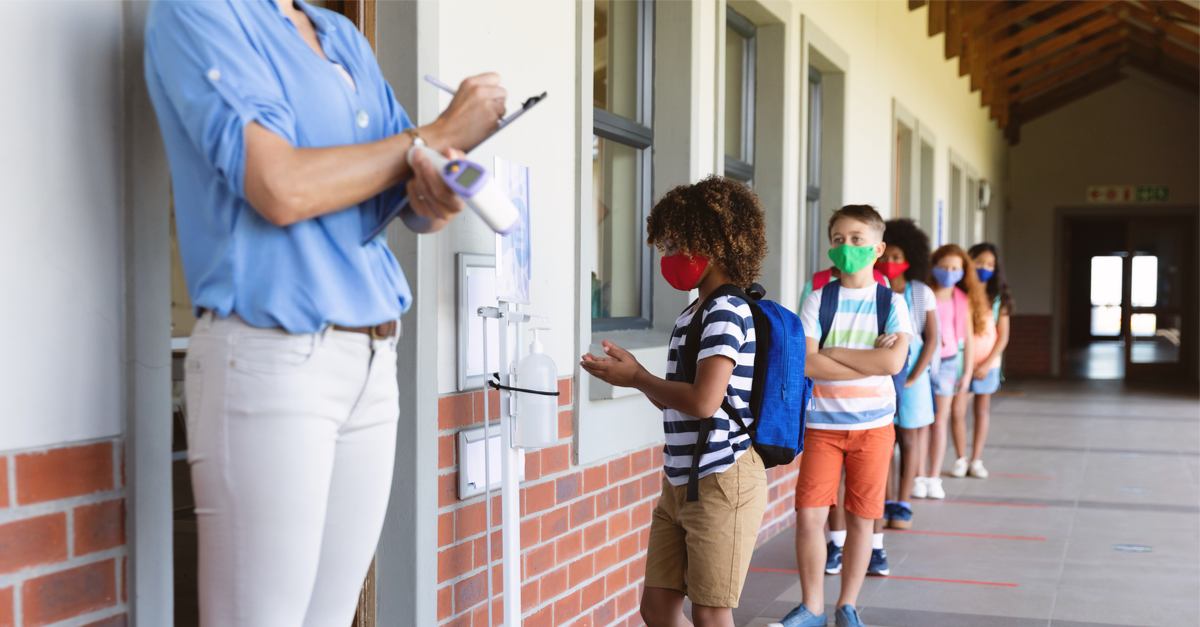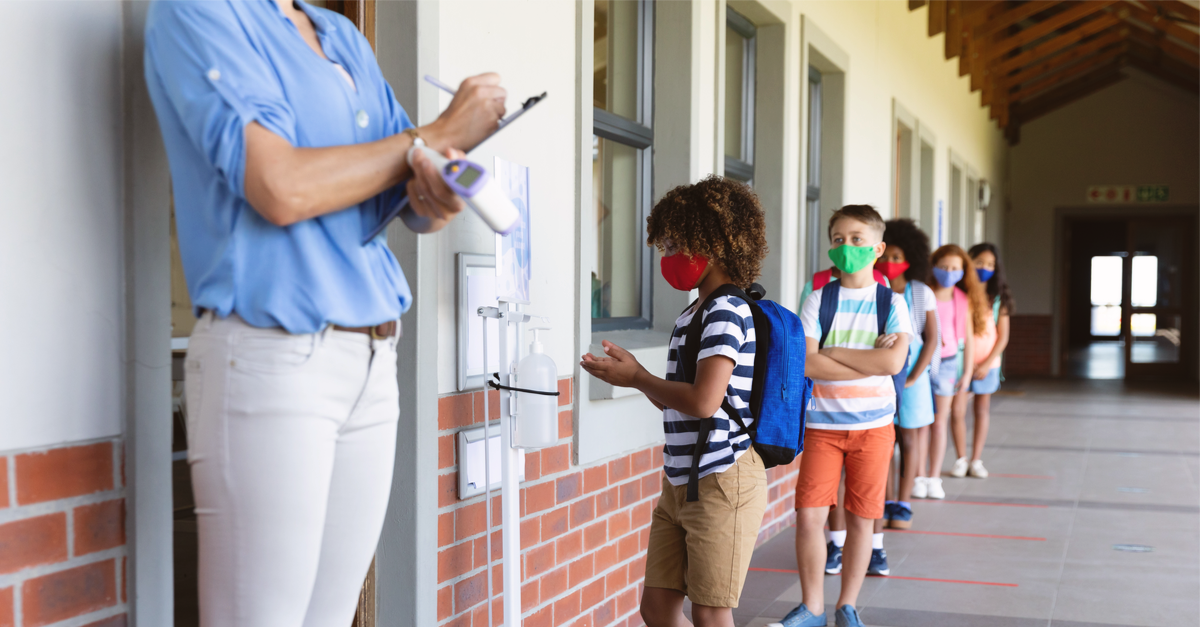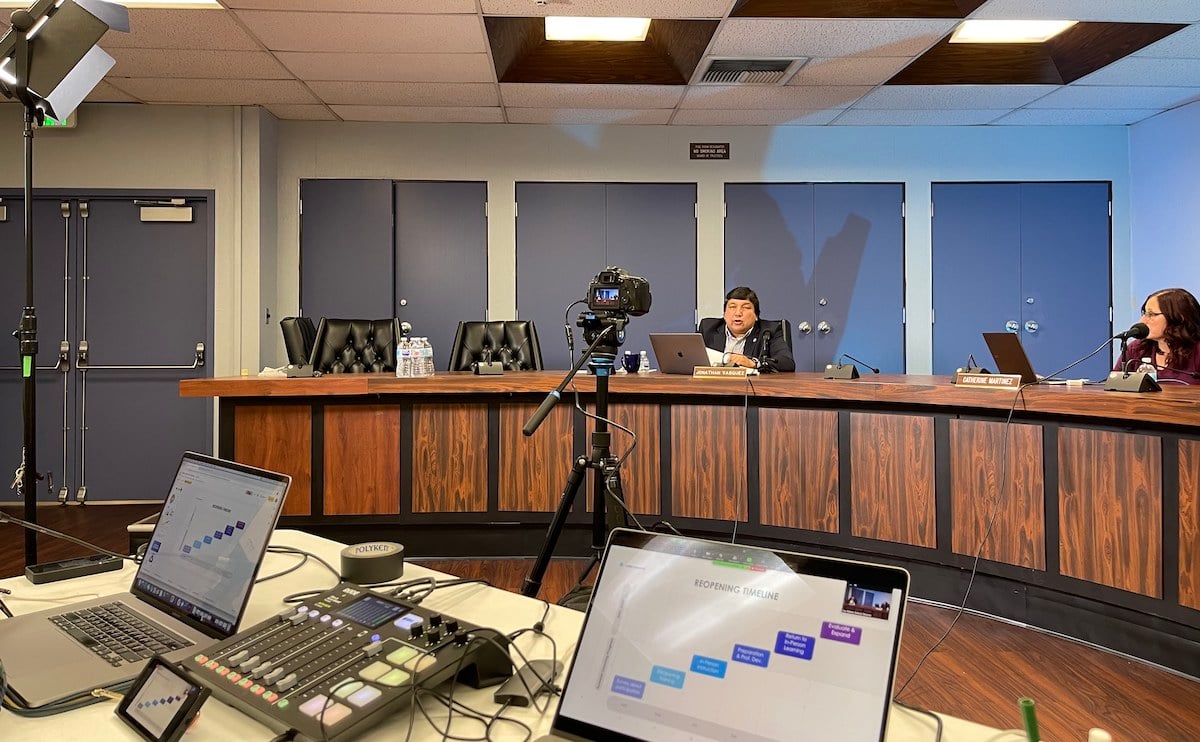Anaheim/OC Hotel & Lodging Association Taps Presidio for Management
As a leading public affairs and communications firm in Southern California, we at Presidio are thrilled to announce that the Anaheim/Orange County...
4 min read
 Samantha Marquez
:
Mar 25, 2021 4:30:00 PM
Samantha Marquez
:
Mar 25, 2021 4:30:00 PM

With the return to in-person classes imminent for schools across the nation, it is vital to begin publicizing the safety protocols that will be in place when students arrive. By doing so, you’ll be able to reassure apprehensive parents, assist staff in upholding procedures, and communicate effectively with incoming students. At Presidio, we work with many schools in Southern California, and along the way, we’ve picked up some great tips for increasing safety protocol awareness. Make sure to read through our blog post so that you can prepare your school for a successful back-to-in-person experience.

The first thing you can do to notify your community of your new safety protocols is to host a virtual town hall. This is a great way to speak directly to parents, answer questions, and explain anything that might be too complicated to only put in writing. Parents will likely have many questions about what in-person school will look like during the pandemic, and you can help them feel more comfortable and confident in sending their child to school by addressing these concerns live.

Another way to communicate clearly with your community is through a high-quality, pre-recorded video. This method is slightly less direct than a virtual town hall because you won’t answer questions live, but it does allow you to demonstrate protocols effectively. If you have 6 ft. apart stickers, for example, in your school’s hallways, you can use this video to show parents how their child(ren) will be able to stay a safe distance from others throughout the school day. By utilizing the informational video method, you can give a comprehensive tour of all protocols your school will be implementing for the return to in-person learning.
In addition to the previous strategies, you can also provide information to your community by posting on social media. You can post a recording of your town hall or any other informational videos across all your social media platforms so that parents can watch them at a preferred time or refer back to them if need be. With that said, don’t just stop there. Make sure to post infographics and demonstrative images to keep your school’s community up to date.

If you’ve found that your community responds better to email newsletters, then they are another excellent alternative for getting the word out about your school’s safety protocols. You can even send out an email newsletter in addition to any social posts, as you’ll be able to include more images and information in a newsletter than you could in a social media graphic or caption. This is also an excellent way to reach parents who might not be on social media sites or are not on the site that your school posts on most often. By sending out an email, you also ensure that all parents will receive your update directly; it won’t get lost in a social media feed.

Another great way to share information about newly implemented safety protocols is to create a dedicated landing page or section on your school or district’s website. This page will provide a place where parents can easily access all safety protocols videos and any other documents created outlining your school’s safety protocols. At Presidio, we recently helped one of our school clients create one such landing page. It now contains their reopening documents, reopening parent survey (used to learn parent sentiments on returning to school in the Fall), information on the various learning models to be offered, and other relevant reopening details. You can check out the school safety protocols landing page we helped create here, as well as another great example here. Feel free to use these to guide the creation of your own dedicated landing page.

In addition to a landing page, you can also provide a comprehensive collection of safety protocols through a Return to Campus Plan. Your plan can be laid out as a pamphlet or guidebook, walking parents and guardians through every facet of return to in-person procedures. It can include visual examples and locations of hand sanitizer stations, 6 ft. apart demarcations, hand washing signage, and more. Once saved as a PDF, this document can then be sent out in an email newsletter, shared through a link on social media, and placed on your school’s dedicated landing page. Make sure to circulate your school’s Return to Campus Plan on all platforms available to you to achieve maximum awareness. Consider, also, adding to it all pertinent dates and requirements for the return to in-person education so that parents can find, in one place, all the information they’ll need to feel confident in and prepared for sending their child(ren) back to school. Download one of our client’s plans here to see an example in action.

Our final recommendation for publicizing school safety protocols is to put up signage around your school. Signage is an essential method of communication that will greatly benefit students. By posting guidelines in the hallways and on doors, you’ll be able to remind them of all recommended safety protocols. This will ensure that they follow procedure throughout the school day, whether that be keeping their mask on or standing 6 ft. away from other students. One fun tip to make your signage stand out is to add images and pops of color that will capture students’ attention. Remember: the text is essential, but the graphic design is important as well!

Each of these tips can work in tandem to increase safety protocol awareness at your school. Implement as many as you can to keep your school’s community informed and encouraged as you shift back to in-person education. We wish you the best of luck with your transition!
Caroline Baetkey contributed to this post.
 Samantha Marquez
Samantha Marquez
Director of Public Agency Services
Samantha Marquez is a community relations and engagement specialist with over six years of experience in legislative affairs and targeted policy messaging on the local and state level. Before coming to Presidio, Samantha served as the District Director to the Majority Leader of the California State Assembly, where she served as a liaison between local public agencies and the state government. In the Assembly, Samantha was the Majority Leader’s principal aide for K-12 education and transportation.
 Caroline Baetkey
Caroline Baetkey
Intern
Caroline is a senior at UCLA, where she is pursuing a B.A. in History with minors in Film, Television & Digital Media and Digital Humanities. She is experienced in a diverse array of communications, including fashion public relations, influencer outreach, and social media marketing. After she graduates in Spring 2021, Caroline plans on working in PR and Marketing.

As a leading public affairs and communications firm in Southern California, we at Presidio are thrilled to announce that the Anaheim/Orange County...

Presidio is excited to welcome the Arts Council for Long Beach (ACLB) as a new client for our government relations, strategic communications,...

Presidio, a leading public affairs firm, is pleased to announce that we have been retained by the California Association of Code Enforcement...